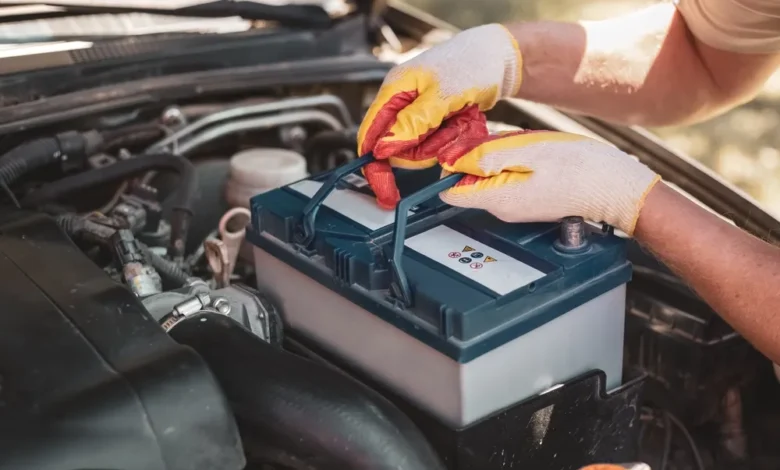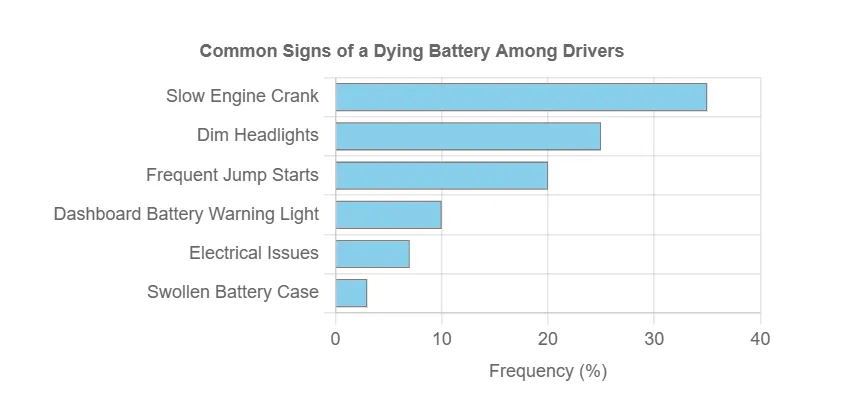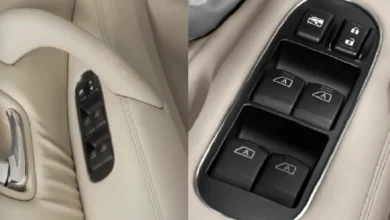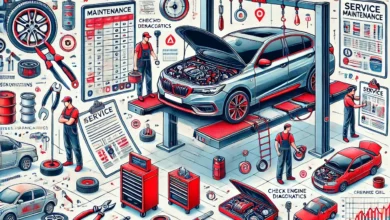
Picture this: you’re in a hurry, jump in your car, and… nothing. The engine doesn’t start. A dead battery can leave you stranded at the worst time. Battery failure is a common problem that worsens over time, and knowing the early signs of a dying battery can save you stress, time, and money.
Let’s explore the signs your car battery is failing, the steps to take if you notice these symptoms, and everything you need to know about battery replacement costs. After reading this, you’ll be better equipped to avoid battery issues and stay on the road.
Why Car Batteries Fail
Batteries gradually lose charge and efficiency. The chemical reactions that generate power weaken, leading to reduced battery capacity. Factors like extreme temperatures, short drives, and age all affect battery performance. Understanding these factors helps explain why some batteries fail faster than others.
Common Causes of Battery Failure
| Cause | Explanation |
| Age | Most batteries last 3-5 years. Aging leads to reduced efficiency. |
| Temperature | Extreme heat or cold accelerates battery wear. |
| Frequent Short Trips | Short trips prevent full recharging, reducing battery life. |
| Corrosion | Battery terminals can corrode, reducing efficiency and power delivery. |
| Parasitic Drains | Accessories left on (like lights) drain the battery when the car is off. |
You might also like: Common Car Problems and Quick DIY Fixes
Signs Your Car Battery Is Dying
A dying battery exhibits several warning signs, often subtle but recognizable.
- Slow Engine Crank: When starting your car, if the engine cranks slower than usual, your battery may be weakening. A sluggish start is a key indicator that the battery isn’t holding a full charge.
- Dim Headlights and Interior Lights: Headlights or interior lights that dim when you start your car signal a power issue. This often means the battery can’t supply enough power to support all electrical systems.
- Dashboard Battery Warning Light: Most vehicles have a battery warning light on the dashboard. If this light illuminates, it may indicate a failing battery or alternator issues.
- Electrical Issues: Your car’s battery powers systems like windows, radio, and air conditioning. If you notice these systems are slower to respond or malfunctioning, a weak battery could be the cause.
- Swollen Battery Case: A swollen or bloated battery case is often caused by excessive heat. This can reduce battery life and performance, so visually inspect the battery if you’re noticing issues.
- Frequent Jump Starts: Needing frequent jump starts usually points to a battery nearing the end of its lifespan. If you find yourself reaching for jumper cables often, it’s time for a replacement.
Visual Representation

Diagnosing: A professional battery test can confirm if your battery is the problem. Most automotive stores offer free battery testing, providing an easy way to identify issues without fully replacing the battery.
What to Do When Your Battery is Failing
- Get Your Battery Tested: Before replacing, confirm the battery is indeed failing.
- Check for Corrosion: Corrosion on the terminals can reduce battery effectiveness. Cleaning terminals may temporarily improve power flow.
- Limit Electrical Use: Reduce strain on the battery by limiting the use of accessories like the radio or AC when not needed.
- Consider Professional Assistance: If you’re unsure, seek help from a mechanic. Battery problems can stem from alternator issues or wiring faults.
Step-by-Step Guide to Replacing Your Battery
Replacing a car battery is straightforward if you follow these steps.
- Prepare the Tools and Workspace: You’ll need safety gloves, a wrench, and a new battery.
- Turn Off the Car: Ensure the car is off to prevent electrical issues.
- Disconnect the Negative Terminal: Start with the negative terminal (black) to reduce the risk of a short circuit.
- Remove the Positive Terminal: Follow with the positive terminal (red).
- Disconnect Holding Clamps: Mostly Batteries are fixed with quick-disconnects, dislodged the quick-disconnects and remover the clamp.
- Lift Out the Old Battery: Carefully remove the battery and set it aside.
- Place the New Battery and Connect Terminals: Reverse the order: connect the positive terminal first, then the negative.
Car Battery Replacement Costs
Replacing a car battery involves both the cost of the battery and, in some cases, labor. Here’s a breakdown:
| Type of Vehicle | Battery Cost (Estimate) | Installation Cost |
| Compact Car | $50 – $120 | $10 – $30 |
| Midsize Sedan | $80 – $150 | $15 – $40 |
| SUV/Truck | $100 – $250 | $20 – $50 |
On average, the total cost ranges from $60 to $300 depending on vehicle type and whether you install it yourself.
Battery Maintenance Tips
Battery maintenance is key to maximizing lifespan and performance. Here’s what to focus on:
- Drive Regularly: Short trips prevent full recharging. Regular, longer drives help keep the battery healthy.
- Inspect Battery Terminals: Clean terminals prevent corrosion and improve power flow. Use a solution of baking soda and water to gently clean them.
- Limit Extreme Temperature Exposure: Whenever possible, park in shaded or indoor areas to reduce temperature stress.
- Turn Off All Electrical Systems Before Exiting: Ensure lights, radio, and other systems are off when you park to avoid parasitic drain.
You might also like: Electric vs. Hybrid
Conclusion
Understanding the warning signs of a dying battery and knowing when to replace it is crucial for any car owner. With proper knowledge, you can avoid sudden breakdowns, stay safe on the road, and even save money on replacement costs. Regular maintenance and attention to battery health will ensure your car starts reliably every time.
By taking action early and following these tips, you can prolong your battery’s life and reduce the risk of unexpected problems.
We hope you found this article helpful. If you did, check out our blog for more great content like this.





